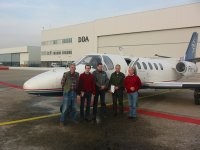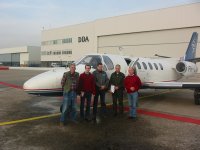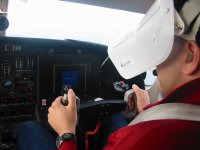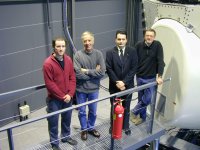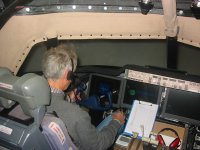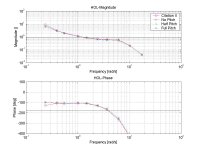‘Fidelity’ can be seen as the ‘realism’ with which the simulator is simulating an aircraft or any other vehicle. It is, however, extremely difficult to measure the fidelity of a simulator accurately (different definitions and different techniques exist). A possible approach, which is used at the Control and Simulation Division, is to look at the behavior of the pilot, instead of any other technical quantities. The idea is that when the pilot’s control behavior in the simulator resembles that in the aircraft closely enough, one can say that the simulator has a high fidelity for that specific task.
Experiments
The ‘Fidelity Experiment Program'(2003-2004) of the C&S-division had as purpose to compare pilot control behavior in the Cessna Citation II with that in the SIMONA Research Simulator (SRS). Two experiments were therefore conducted, one in a real twin-jet aircraft (Citation) and one in the simulator (SRS). Four experienced pilots participated in the experiment. The task which has been flown was a pitch-tracking following task, in which the pilot had to follow a signal on a LCD-screen in front of him. The measured data were used to extract a description of the pilot control behavior in the frequency domain (pilot describing function).
In the aircraft, only two different conditions were flown (two different types of displays). In the simulator, compared to the aircraft, the motion characteristics could easily be varied, by changing the motion filter settings. It was for example possible to present only pitch-motion cues (rotational motion) to the pilot or only heave-motion cues (vertical motion), or a combination, or just a portion of this motion. Totally, 9 different motion filters were used.
Results
The first results indicate that the amount of motion presented to the pilot is of great influence on his subjective impression of the realism of the simulator. Objectively however, little or no differences were found between his behavior in the aircraft and in the simulator (see figure: the open loop dynamics of pilot + aircraft). Surprisingly the pilots behaved very comparable in the simulator (with or without motion) and in the aircraft. A lot of new ideas for further research were found.
This work is performed by Maarten Steurs (M.Sc. student). For more information please contact his supervisor René van Paassen.

